 Of course I read this book right away after buying it last weekend. It’s just about the only fiction I bought, as I don’t tend to browse those tables at large book sales. But this was on the Collectibles/Antiquarian tables as it’s a signed first edition from 1983. Which makes it both.
Of course I read this book right away after buying it last weekend. It’s just about the only fiction I bought, as I don’t tend to browse those tables at large book sales. But this was on the Collectibles/Antiquarian tables as it’s a signed first edition from 1983. Which makes it both.
Also, I should note that right about the turn of the century, I read through the Robert B. Parker books in order to that point. It was before I was blogging and before I was writing book reports, so I don’t have any way to review what I thought about them then. But twenty years later, with the early twenty-first century Parkers and the Atkins/Brandman/Coleman continuation of Parker’s series between now and then, I am putting my thoughts down which are only a little about the book and more about the oeuvre and its impact on my youth. I’ve mentioned it before (see my thirty-year-old essay Meeting Robert B. Parker), gentle reader, but all those people coming in from Google in the coming years won’t have heard the story a hundred times before.
So, where are we in the series? Susan has gone off to Washington to work. So it’s before Valediction when she goes out west. And before A Catskill Eagle and before the television series, which I think influenced his work to where the books later become mostly dialog and repeats.
At any rate, the plot: A congressman and Senate candidate comes to Spenser because he needs a head of security, and Spenser’s at loose ends so he hires on. He discovers someone is blackmailing the congressman to drop out and endorse his opponent. The congressman’s wife apparently likes to drink and has ended up videotaped having sex with a younger man. Spenser vows to find out who did it and how to extricate the congressman without exposing his wife or even letting the wife know what is going on. Because the congressman love-loves his wife, you see. Or maybe that should be capitalized as Love because their relationship is drawn to parallel Spenser and Susan’s. Spenser discovers that the son of local mobster Joe Broz, Gerry Broz, is doing a little dealing and grifting on his own to impress his father, and when things go a little sideways, the son asks his father’s second to help clear it up without the father’s knowledge.
When analyzed kind of like I do the Executioner books, I break it into a couple set pieces of actual detecting between sections of self-analysis and conversations with the other characters, and I see how few action set pieces there actually are. Of course, the book clocks in at under 200 pages, so it’s not a Jack Reacher or other modern suspense novel–and it owes as much to John D. MacDonald as it does to Raymond Chandler or Ross MacDonald. But the pieces fit all right together with a balance between them which added deft depth to the genre.
As I read this, I recognized why I loved these books as a kid. They’re suspense novels, with the Spenser being arch and tough and well-read and philosophical, musing (again) on self-definition and introducing some conceptions on what means for Spenser to Love (or love-love) Susan. The kind of thing that a boy growing up without a father and prone to reading books might come to idolize.
Ah, but the seeds of the things that later turned me off to Spenser novels are present. The introspection on what love is and how it can best serve Feminist-driven female self-discovery zeitgeist (here only the woman being free to be herself whilst Spenser Loves or love-loves her). Although the MacGuffin of the congressman’s wife’s infidelity here is treated not so much as that it’s morally wrong but impractical and possibly neurotic, it would be almost thirty years before it would be something to celebrate (as in the repellent Split Image). We also get the starts of Deus Ex Mafia, where the resolution is a negotiated settlment between Spenser and some crime figure who comes to believe, possibly after an attempted hit, that coming to terms with Spenser is easier and safer than killing him. I guess the negotiated settlements started out earlier–God Save the Child and Early Autumn come to mind–but in later novels, negotiated settlements with actual criminals seem to become the norm. Or maybe I don’t remember them as well because I did not read them in my formative years and because I only read them once.
On one hand, reading this book reminded me of why I liked the earlier Spenser novels and almost makes me want to re-read them up to maybe Valediction. I mean, I re-read Early Autumn fairly regularly in my formative years and even gave it as a gift to one or more friends that I thought could use some encouragement in self-definition.
But I have so many other books to read, so I will likely hold off on that unless I find other signed first editions on collectible tables in the future.
As it stands, the hardback I already owned of this title was a Book Club Edition. So I seriously upgraded my collection with this $7.50 purchase. Which could well be my last addition to the collection unless the Spenserian Sonnet limited edition falls into my lap. I see that the Wikipedia entry for Robert B. Parker’s bibliography does not include his dissertation The Private Eye in Chandler and Hammett or Parker on Writing, both signed and numbered limited editions nor his signed and numbered sonnet; I have two of three in my collection as I was a serious collector for a while around the turn of the century. But, ah, the loss of heroes, ainna?
 It seems like it took me a lot longer to read this book than it did. As you might remember, gentle reader, I bought this book along with two others (Divine Fruit and Four Gates to Health: Eastern Ideas and Techniques for Vital Living) last May at an ABC Books book signing. I read the collection of poetry soon after I bought the books, and I am pretty sure that I started this book in the beginning of June last year.
It seems like it took me a lot longer to read this book than it did. As you might remember, gentle reader, I bought this book along with two others (Divine Fruit and Four Gates to Health: Eastern Ideas and Techniques for Vital Living) last May at an ABC Books book signing. I read the collection of poetry soon after I bought the books, and I am pretty sure that I started this book in the beginning of June last year.


 Okay, wow, now that is impressive. I have recently read a book on
Okay, wow, now that is impressive. I have recently read a book on 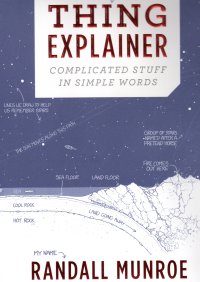 This is the third of Munroe’s books I read. I read
This is the third of Munroe’s books I read. I read  I picked up this book at ABC Books
I picked up this book at ABC Books 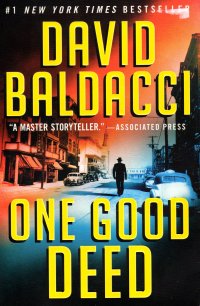 On a recent visit to the Kansas City area, my aunt said she was looking to get rid of some books that someone had given her, so I took the lot. Which was good, as I was staying in a hotel that night and had somehow failed to bring a book to read. Atop the stack was a book by David Baldacci; I kind of recognized the name because my beautiful wife has been known to get his books from the library from time to time. So I started with this one.
On a recent visit to the Kansas City area, my aunt said she was looking to get rid of some books that someone had given her, so I took the lot. Which was good, as I was staying in a hotel that night and had somehow failed to bring a book to read. Atop the stack was a book by David Baldacci; I kind of recognized the name because my beautiful wife has been known to get his books from the library from time to time. So I started with this one. You might have thought I already read this book, gentle reader–I could see how I might have gotten that impression, as I have already perused
You might have thought I already read this book, gentle reader–I could see how I might have gotten that impression, as I have already perused  Sixteen years after
Sixteen years after  In keeping with the tradition, I am tearing through the travel and art books I’ve bought this summer and autumn on Sunday afternoons, Monday evenings, and occasionally Thursday evenings as I “watch” football games (which is more and more meaning I look up from my book to check the score from time to time). The weather has again turned to autumn at Nogglestead, and I like nothing better than lighting a fire (okay, a
In keeping with the tradition, I am tearing through the travel and art books I’ve bought this summer and autumn on Sunday afternoons, Monday evenings, and occasionally Thursday evenings as I “watch” football games (which is more and more meaning I look up from my book to check the score from time to time). The weather has again turned to autumn at Nogglestead, and I like nothing better than lighting a fire (okay, a 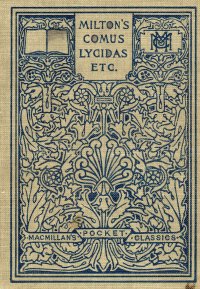 I said when I reported on
I said when I reported on  You know, gentle reader, for the last couple of weeks, most of my reading has been poetry, art monographs, travel books, and Christian self-help kinds of books (we’ll get to those by and by). Given the sheer number of those books that I’ve polished off in the last couple of weeks, it seems like a long time since I read any fiction (it’s not–I read
You know, gentle reader, for the last couple of weeks, most of my reading has been poetry, art monographs, travel books, and Christian self-help kinds of books (we’ll get to those by and by). Given the sheer number of those books that I’ve polished off in the last couple of weeks, it seems like a long time since I read any fiction (it’s not–I read 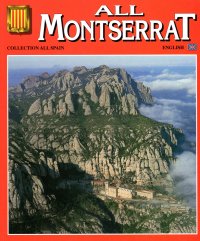 This book describes the Montserrat monestary just ourside of Barcelona, Spain. The monestary complex sits upon a mountain that has a rather distinctive shape with multiple rock features with individual names; the first part of the book describes its formation and how the natives named pretty much every rock on it over the millennia.
This book describes the Montserrat monestary just ourside of Barcelona, Spain. The monestary complex sits upon a mountain that has a rather distinctive shape with multiple rock features with individual names; the first part of the book describes its formation and how the natives named pretty much every rock on it over the millennia. 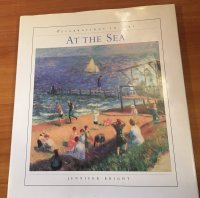 Instead of a single artist’s monograph, this book collects a number of paintings of the sea from Pieter Brueghel the Elder’s “Fall of Icarus” to modernist twaddle like Jackson Pollock’s “Blue (Moby Dick)”. So you can take one subject like this and kind of chart the evolution of painting through the depiction of sea-side scenes.
Instead of a single artist’s monograph, this book collects a number of paintings of the sea from Pieter Brueghel the Elder’s “Fall of Icarus” to modernist twaddle like Jackson Pollock’s “Blue (Moby Dick)”. So you can take one subject like this and kind of chart the evolution of painting through the depiction of sea-side scenes. Well, this is a relatively recent travel book. Most of the time, I find these old travel books are from the 1960s or the 1980s, but someone who went to France in this century brought this back, and this person or the heirs sold it to Calvin’s Books for me to pick up
Well, this is a relatively recent travel book. Most of the time, I find these old travel books are from the 1960s or the 1980s, but someone who went to France in this century brought this back, and this person or the heirs sold it to Calvin’s Books for me to pick up  You know, I wanted to really dislike Frida Kahlo’s work because she’s so celebrated by modern tastemakers because she was a foreign Communist bisexual back in the day. Because that’s what titillates a lot of people who want to be seen as right-thinking more than their response to the art itself, their response to the artist as celebrity. Which Frido Kahlo was and might well still be. I mean, I’ve seen ads for merchandise with her on them even in this twenty-first century.
You know, I wanted to really dislike Frida Kahlo’s work because she’s so celebrated by modern tastemakers because she was a foreign Communist bisexual back in the day. Because that’s what titillates a lot of people who want to be seen as right-thinking more than their response to the art itself, their response to the artist as celebrity. Which Frido Kahlo was and might well still be. I mean, I’ve seen ads for merchandise with her on them even in this twenty-first century.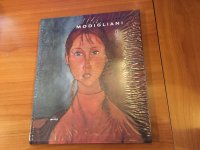 Have you heard the name Modigliani? I had not. He lived a brief consumptive life around the turn of the century in France, and his art work is somewhere between the Impressionism or whatever Gauguin did and Picasso; the images are representative but distorted in proportion and brutal in execution. He was only starting to get some recognition when he passed away from tuberculosis, so he’s really only known amongst art people, and perhaps fewer of them as we go along.
Have you heard the name Modigliani? I had not. He lived a brief consumptive life around the turn of the century in France, and his art work is somewhere between the Impressionism or whatever Gauguin did and Picasso; the images are representative but distorted in proportion and brutal in execution. He was only starting to get some recognition when he passed away from tuberculosis, so he’s really only known amongst art people, and perhaps fewer of them as we go along.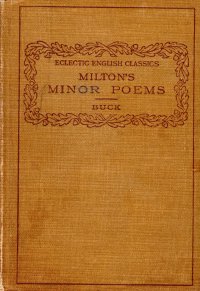 This book collects four pieces from Milton which do not have Paradise in the title and are not about his blindness. “L’Allegro” presents life as a person with a happy outlook. “Il Penseroso” presents life from a melancholy outlook. “Comus: A Masque” is a brief verse play wherein the sorceror child of Circe and Bacchus tries to tempt a virtuous woman to give up her life of chastity and to enjoy natural, sensual delights. And “Lycidas” is an elegy for a drowned companion that detours into political commentary that diminishes its impact.
This book collects four pieces from Milton which do not have Paradise in the title and are not about his blindness. “L’Allegro” presents life as a person with a happy outlook. “Il Penseroso” presents life from a melancholy outlook. “Comus: A Masque” is a brief verse play wherein the sorceror child of Circe and Bacchus tries to tempt a virtuous woman to give up her life of chastity and to enjoy natural, sensual delights. And “Lycidas” is an elegy for a drowned companion that detours into political commentary that diminishes its impact.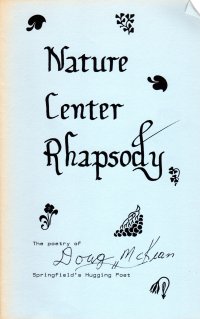 As you might know, gentle reader, I sometimes take my children to the Nature Center here in Springfield, so I’m familiar with some of the locations mentioned in the book. And, in a Springfieldian turn of events, my beautiful wife nows the author: his wife taught algebra and his child played in the band with her. So I’d better not go too hard on the fellow as it might stifle our social life.
As you might know, gentle reader, I sometimes take my children to the Nature Center here in Springfield, so I’m familiar with some of the locations mentioned in the book. And, in a Springfieldian turn of events, my beautiful wife nows the author: his wife taught algebra and his child played in the band with her. So I’d better not go too hard on the fellow as it might stifle our social life. Nancy Erkholm Burkert is a Wisconsin- and maybe even Milwaukee-based illustrator and artist, and I never heard of her before. Which is probably a ding on my knowledge of Wisconsin, but in my defense, I was not browsing art books all that much in my school days. Although I did go to the Milwaukee Art Museum fairly frequently, and surely it must have some of her work, ainna?
Nancy Erkholm Burkert is a Wisconsin- and maybe even Milwaukee-based illustrator and artist, and I never heard of her before. Which is probably a ding on my knowledge of Wisconsin, but in my defense, I was not browsing art books all that much in my school days. Although I did go to the Milwaukee Art Museum fairly frequently, and surely it must have some of her work, ainna? Well, now, gentle reader, I will have another section to pick through at the Friends of the Springfield-Greene County Library book sale: Architecture (and home design). I bought this book
Well, now, gentle reader, I will have another section to pick through at the Friends of the Springfield-Greene County Library book sale: Architecture (and home design). I bought this book  Of course I read this book right away after buying it
Of course I read this book right away after buying it